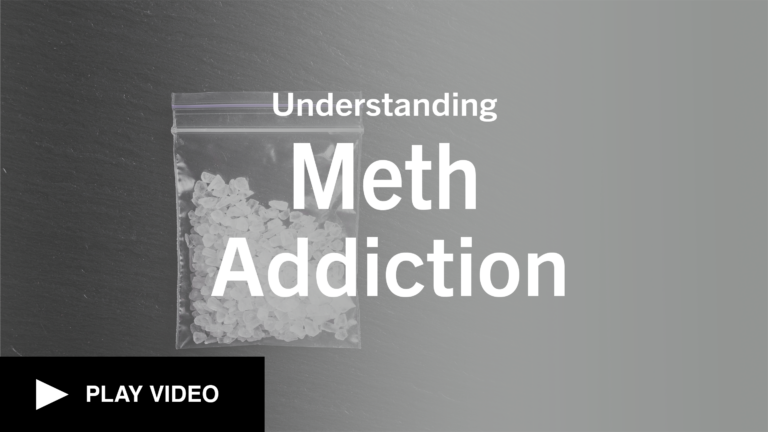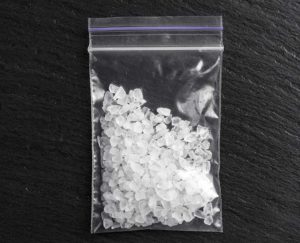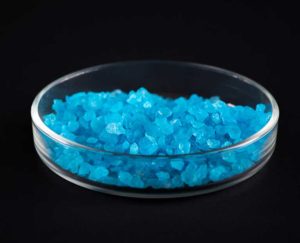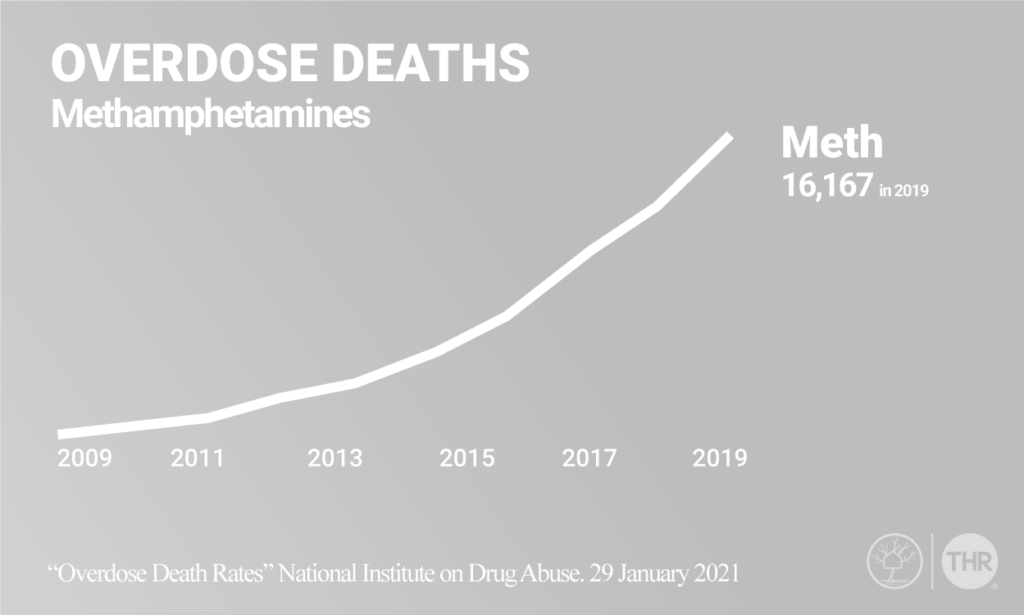Understanding and Breaking Free of Methamphetamine Addiction
What is Meth?
Methamphetamine, also called meth or crystal meth, is a stimulant that creates euphoria and increased energy. Meth is a kind of amphetamine, but unlike the amphetamines prescribed for ADHD, weight loss, or narcolepsy (called dextroamphetamine), doctors do not prescribe meth. Compared to other amphetamines, meth is better at entering the brain, making it more potent and long-lasting [1]. If you or a loved one is addicted to meth, Tree House Recovery’s meth addiction treatment program and other substance abuse programs in North Carolina can make a difference.
The U.S. government classifies amphetamines like meth as Schedule II narcotics [1].
This means that meth has a high potential for abuse and little medical value. In their pure form, methamphetamines have no medical value. However, doctors do prescribe amphetamines for specific conditions.
Stimulant [1].
The Origin of Meth:
Understanding Meth Addiction

What Does Meth Look Like?


How is Meth Used?
Methamphetamine can be snorted, smoked, taken as a pill, or dissolved and then injected. Meth is usually sold either as blue or white rocks, glass-like fragments, powder, or pills. In its rock or “glass” form, meth is easy to ignite and smoke. In its powder form, it dissolves easily in liquids making it easy to ingest or inject [3]. Most meth users follow a binge and crash pattern where they use more as soon as it wears off. During these binges, they are usually unable to eat or sleep, so their bodies crash from exhaustion after several days.
People also mix meth with other drugs. The most common mixture is called a speedball, which combines meth with a depressant like opioids. People using speedballs report that the highs of each drug negate the adverse effects of the other. However, this is incredibly dangerous because it encourages people to use more than usual, leading to an overdose. There is no safe use of meth, especially when it is mixed with other drugs. Those who are using meth should reach out to our meth addiction treatment center in North Carolina for help.
Dangers of Meth:
Like other stimulants, meth mimics an adrenaline rush once the effects begin. However, meth’s effects last far longer than stimulants such as crack or cocaine, making it even harder for your body for several reasons. The first is that your body is essentially operating in an adrenaline state for hours or even days at a time, which can cause heart or lung failure. The second is that people high on meth are usually unable to eat or sleep. This means that as their heart and lungs are struggling to function, the body is also not receiving any nourishment. Lastly, reports from rehabs say that meth’s come-down or crash is particularly uncomfortable and prompts people to use more right away to make the side effects of the crash go away. As this pattern repeats, addiction and overdose risks build quickly [3].
Meth Overdose Rates:
Methamphetamine overdose rates rose steadily from 1,854 in 2010 to 16,167 in 2019. The most significant jump in meth overdoses occurred between 2018 and 2019 when 4,000 more people overdosed [4]. Statistically, men are three times more likely to overdose than women, and overdoses occur more on meth alone compared to overdoses caused by mixing meth with opioids like heroin or fentanyl [4].
Methamphetamines Overdose Graph:

Signs of Meth Addiction:
Physical Signs:
There are many physical signs that someone is abusing meth because it taxes a person’s body. Between the constant adrenaline state, insufficient sleep, and not eating, a person using meth will have several symptoms of malnourishment and insomnia [3], including:
- Extreme weight loss
- Unhealthy yellowish skin tones
- Rotten teeth (meth mouth)
- Wrinkles on the face
- Sores on skin
- Noticeable bags under eyes
- Acne
- Hallucinations
- Dilated pupils
- Poor hygiene
Changes in Behavior
Meth is a stimulant that produces an excited and euphoric state, which is why people experiment with it. But meth has a heavy psychological toll on people who use it, particularly those who abuse it frequently. One of the first changes is a loss in former interests, friends, hobbies, and social circles. Later, other behaviors can become more common, including:
- Extreme mood swings
- Erratic sleep schedules
- Erratic eating habits (never hungry, then binging)
- Paranoia
- Rapid eye movement
- Agitation
- Hyperactivity
- Twitching, facial tics, jerky movements
- Tweaking **
**Tweaking: Meth highs can last for hours or days depending on potency. People will often use more after it wears off to continue the high or avoid the crash. However, when the high becomes impossible to achieve again because their brain and body are too exhausted from sleep and food deprivation, “tweaking” occurs. A tweaking meth user can be dangerous to be around because they are likely experiencing painful cravings but cannot get high from meth. As a result, they may experience rage, violence, aggression, or mood swings. Since they have likely not been eating or sleeping, a tweaking meth user may also start to hallucinate and hurt themselves or those around them [3].
Side Effects of Meth
Methamphetamine is a potent stimulant. Like all stimulants, it creates euphoria and energy and pushes the body into an adrenaline state. Because of how potent meth is, it’s common to experience extreme stimulant side effects like insomnia and no appetite. And because of how long meth can last, these effects take a toll in the long term [3]. Some of the most common side effects include:
- Euphoria
- Feeling energetic
- Confidence
- Talkativeness
- Decreased appetite
- Weight Loss
- Insomnia
- Alertness
- Agitation
- Skin sores
- Acnes
- Rotten Teeth (meth mouth) from malnourishment
- Bad breath
- Losing touch with reality (delusions)
- Hallucinations
- Violence
- Self-harm
- Thin or yellowish skin
- Premature aging in appearance
- Paranoia
- Anxiety
- Heart Failure
- Malnutrition
- Anhedonia (inability to feel pleasure)
Meth Nicknames
A street name is a way for people who use meth to talk about their addiction discreetly. This means that if you hear these terms, someone may be talking about meth use [7]. They include:
- Speed
- Crank
- Ice
- Shabu
- Tweak
- Chalk
- Wash
- Trash
- Dunk
- Gak
- Pookie
- Cookies
- Christina
- Tina
- No doze
- White cross
- Cotton candy
- Rocket fuel
- Scooby Snax
Meth Withdrawal Symptoms
Most of those who use meth abuse the drug in cycles because the symptoms of coming off meth are unpleasant and painful. When a person crashes off a meth high, their body has a shortage of pleasure and energy transmitters, and it’s likely they haven’t slept or eaten in a while. Combined, these produce several withdrawal symptoms:
- Drug cravings
- Itchiness
- Dry heaving
- Increased appetite
- Exhaustion
- Paranoia, delusions, or hallucinations from exhaustion
- Depression or suicidal thoughts
- Mood swings
- Aggression, irritation, and physical violence
Our Meth Addiction Treatment Program in North Carolina
To successfully treat meth addiction, you need to do three things. The first is to end your body’s craving for meth and give yourself a safe place to come off meth in medical detox. The second and most important is to learn the things that drive your addiction to meth. Finally, you need a maintenance plan that includes things you can do and practice after rehab to make sure you stay clean.

Meth Detox
Detox does not treat a person’s underlying addiction. It simply allows them to be sober without experiencing painful physical withdrawal symptoms. In detox, doctors can supervise you, monitor your vitals, and provide medications to decrease the amount and severity of your withdrawals.

Meth Addiction Treatment
After detox, your body will not crave meth, but your mind might. That’s why it’s essential to attend a meth rehab program where you’ll learn what drives your addiction and how to address it. A good meth addiction treatment center will understand that addiction comes from a mix of social, mental, and physical factors and will give you the tools you need to navigate any challenges. As a result, cravings will become fewer, weaker, and much easier to deal with in the future.
 Aftercare
Aftercare
There is no cure for addiction. Living in recovery means staying sober long-term after rehab, and there will be times when this is challenging. A solid aftercare plan is essential for dealing with these situations. Aftercare includes outpatient therapy, sober communities, support groups, lifestyle changes, and tactics for avoiding relapse in certain situations. However, every person’s addiction and aftercare plan is different.

Author
Derek Swain: Addiction Writer
- https://www.drugabuse.gov/publications/research-reports/methamphetamine/what-methamphetamine
- https://www.webmd.com/mental-health/addiction/crystal-meth-what-you-should_know#1
- https://www.drugabuse.gov/publications/drugfacts/methamphetamine
- https://www.drugabuse.gov/drug-topics/trends-statistics/overdose-death-rates
- https://www.webmd.com/connect-to-care/addiction-treatment-recovery/methamphetamine/signs-of-a-meth-overdose-and-what-to-do
- https://ag.nv.gov/Hot_Topics/Issue/Meth_Forms/
- https://www.dea.gov/factsheets/methamphetamine
